Mission type Lunar orbiter SATCAT no. 33405 Launch mass 1,380 kg Start date October 22, 2008 | COSPAR ID 2008-052A Launch date 22 October 2008 Launch mass 1,380 kg Cost 90 million USD (2008) | |
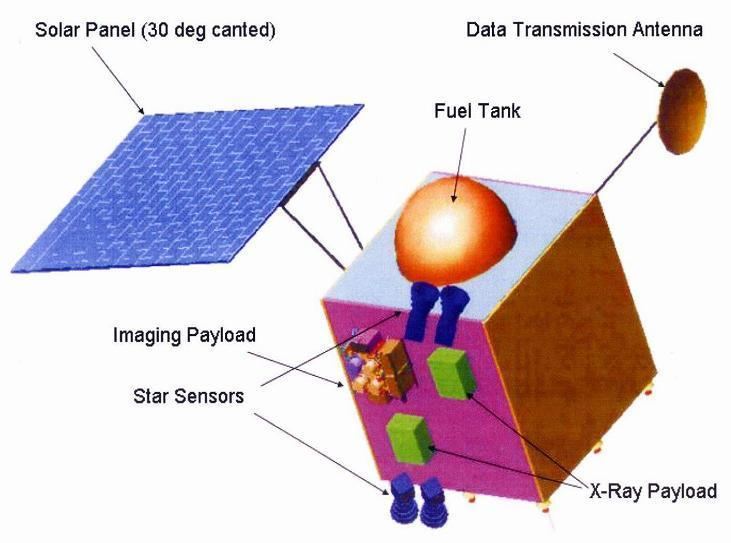 | ||
Operator Indian Space Research Organisation Website www.isro.gov.in/Spacecraft/chandrayaan-1 Mission duration Planned: 2 yearsFinal: 310 days Manufacturer Indian Space Research Organisation Similar Chandrayaan‑2, Moon Impact Probe, LCROSS, Moon Mineralogy Mapper, Lunar Reconnaissance Orbiter | ||
Chandrayaan 1
Chandrayaan-1 (Sanskrit: चन्द्रयान-१,([ t͡ʃʌnd̪ɾʌːjaːn]; lit: Moon vehicle pronunciation ) was India's first lunar probe. It was launched by the Indian Space Research Organisation in October 2008, and operated until August 2009. The mission included a lunar orbiter and an impactor. India launched the spacecraft using a PSLV-XL rocket, serial number C11, on 22 October 2008 from Satish Dhawan Space Centre, Sriharikota, Nellore District, Andhra Pradesh, about 80 km north of Chennai, at 06:22 IST (00:52 UTC). Prime minister Atal Bihari Vajpayee announced the project on course in his Independence Day speech on 15 August 2003. The mission was a major boost to India's space program, as India researched and developed its own technology in order to explore the Moon. The vehicle was successfully inserted into lunar orbit on 8 November 2008.
Contents
- Chandrayaan 1
- Facts
- History
- Objectives
- Specifications
- Specific areas of study
- Payload
- Indian instruments
- Instruments from other countries
- Mission timeline
- Earth orbit burns
- Lunar orbit insertion
- Impact of the MIP on the lunar surface
- Rise of spacecrafts temperature
- Mapping of minerals
- Mapping of Apollo landing sites
- Images acquisition
- Detection of X Ray signals
- Full Earth image
- Orbit raised to 200km
- Attitude sensor failure
- Radar scans
- End of the mission
- Analysis of collected data
- Lunar water discovery
- Lunar water production
- Lunar caves
- Tectonism
- Awards for Chandrayaan 1
- Team
- Public release of data
- Chandrayaan 2
- Lunar outpost
- References
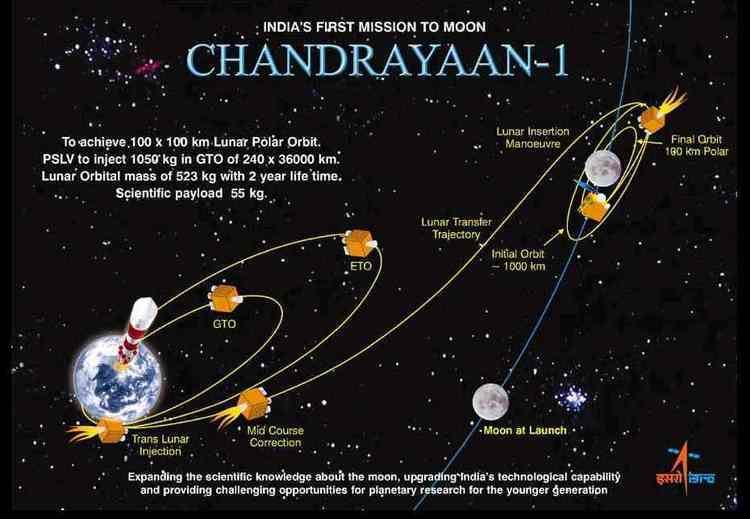
On 14 November 2008, the Moon Impact Probe separated from the Chandrayaan orbiter at 20:06 and struck the south pole in a controlled manner, making India the fourth country to place its flag on the Moon. The probe hit near the crater Shackleton at 20:31, ejecting sub-surface soil that could be analysed for the presence of lunar water ice.
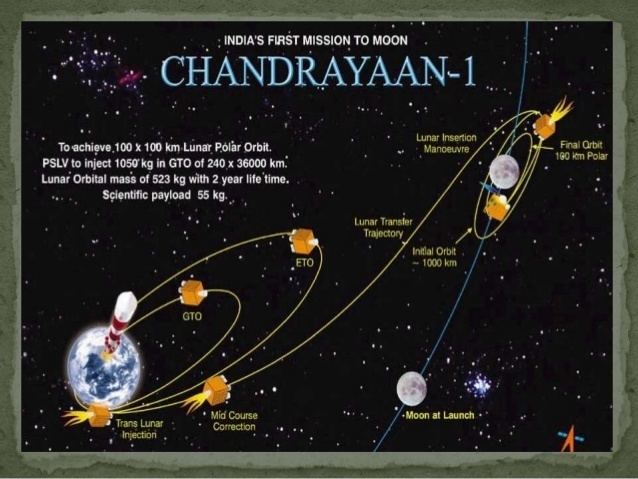
The estimated cost for the project was ₹3.86 billion (US$57 million). The remote sensing lunar satellite had a mass of 1,380 kg (3,040 lb) at launch and 675 kg (1,488 lb) in lunar orbit. It carried high resolution remote sensing equipment for visible, near infrared, and soft and hard X-ray frequencies. Over a two-year period, it was intended to survey the lunar surface to produce a complete map of its chemical characteristics and three-dimensional topography. The polar regions are of special interest as they might contain ice. The lunar mission carried five ISRO payloads and six payloads from other space agencies including NASA, ESA, and the Bulgarian Aerospace Agency, which were carried free of cost.
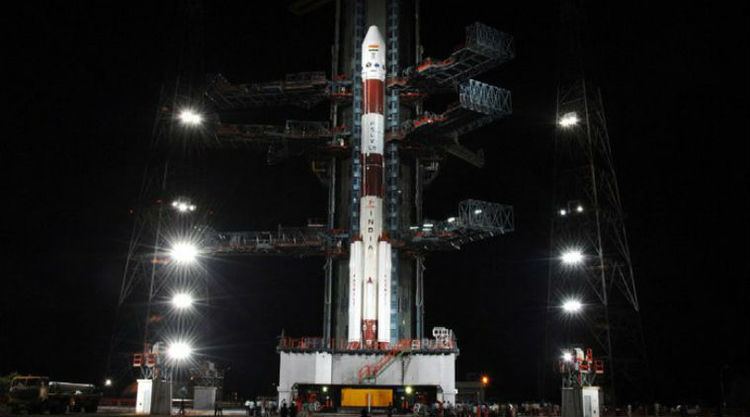
After almost a year, the orbiter started suffering from several technical issues including failure of the star sensors and poor thermal shielding, Chandrayaan stopped sending radio signals at 01:30 IST on 29 August 2009 shortly after which, the ISRO officially declared the mission over. Chandrayaan operated for 312 days as opposed to the intended two years but the mission achieved 95% of its planned objectives. Among its many achievements, the greatest achievement was the discovery of the widespread presence of water molecules in the lunar soil.

Facts
History
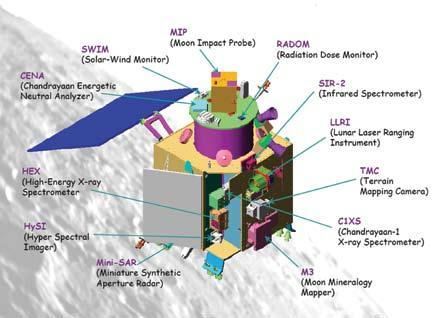
Prime minister Atal Bihari Vajpayee announced the Chandrayaan project on course in his Independence Day speech on 15 August 2003. The mission was a major boost to India's space program. The idea of an Indian scientific mission to the Moon was first mooted in 1999 during a meeting of the Indian Academy of Sciences. The Astronautical Society of India carried forward the idea in 2000. Soon after, the Indian Space Research Organisation (ISRO) set up the National Lunar Mission Task Force which concluded that ISRO has the technical expertise to carry out an Indian mission to the Moon. In April 2003 over 100 eminent Indian scientists in the fields of planetary and space sciences, Earth sciences, physics, chemistry, astronomy, astrophysics and engineering and communication sciences discussed and approved the Task Force recommendation to launch an Indian probe to the Moon. Six months later, in November, the Indian government gave the nod for the mission.
Objectives
The mission had the following stated scientific objectives:

Specifications
Specific areas of study
Payload
The scientific payload had a total mass of 90 kg and contained five Indian instruments and six instruments from other countries.
Indian instruments
Instruments from other countries
Mission timeline
Chandrayaan-1 was launched on 22 October 2008 at 6.22 am IST from Satish Dhawan Space Centre using the ISRO's 44.4 metre tall four-stage PSLV launch rocket. Chandrayaan-1 was sent to the Moon in a series of orbit-increasing manoeuvres around the Earth over a period of 21 days as opposed to launching the craft on a direct trajectory to the Moon. At launch the spacecraft was inserted into geostationary transfer orbit (GTO) with an apogee of 22,860 km and a perigee of 255 km. The apogee was increased with a series of five orbit burns conducted over a period of 13 days after launch.
For the duration of the mission, ISRO's telemetry, tracking and command network (ISTRAC) at Peenya in Bangalore, tracked and controlled Chandrayaan-1. Scientists from India, Europe, and the U.S. conducted a high-level review of Chandrayaan-1 on 29 January 2009 after the spacecraft completed its first 100 days in space.
Earth orbit burns
The first orbit-raising manoeuvre of Chandrayaan-1 spacecraft was performed at 09:00 hrs IST on 23 October 2008 when the spacecraft’s 440 Newton Liquid Engine was fired for about 18 minutes by commanding the spacecraft from Spacecraft Control Centre (SCC) at ISRO Telemetry, Tracking and Command Network (ISTRAC) at Peenya, Bangalore. With this Chandrayaan-1’s apogee was raised to 37,900 km, and its perigee to 305 km. In this orbit, Chandrayaan-1 spacecraft took about 11 hours to go around the Earth once.
The second orbit-raising manoeuvre of Chandrayaan-1 spacecraft was carried out on 25 October 2008 at 05:48 IST when the spacecraft’s engine was fired for about 16 minutes, raising its apogee to 74,715 km, and its perigee to 336 km, thus completing 20 percent of its journey. In this orbit, Chandrayaan-1 spacecraft took about twenty-five and a half hours to go round the Earth once. This is the first time an Indian spacecraft has gone beyond the 36,000 km high geostationary orbit and reached an altitude more than twice that height.
The third orbit raising manoeuvre was initiated on 26 October 2008 at 07:08 IST when the spacecraft’s engine was fired for about nine and a half minutes. With this its apogee was raised to 164,600 km, and the perigee to 348 km. In this orbit, Chandrayaan-1 took about 73 hours to go around the Earth once.
The fourth orbit-raising manoeuvre took place on 29 October 2008 at 07:38 IST when the spacecraft's engine was fired for about three minutes, raising its apogee to 267,000 km and the perigee to 465 km. This extended its orbit to a distance more than half the way to the Moon. In this orbit, the spacecraft took about six days to go around the Earth once.
The fifth and final orbit raising manoeuvre was carried out on 4 November 2008 04:56 am IST when the spacecraft’s engine was fired for about two and a half minutes resulting in Chandrayaan-1 entering the Lunar Transfer Trajectory with an apogee of about 380,000 km.
Lunar orbit insertion
Chandrayaan-1 successfully completed the lunar orbit insertion operation on 8 November 2008 at 16:51 IST. This manoeuvre involved firing of the liquid engine for 817 seconds (about thirteen and half minutes) when the spacecraft passed within 500 km from the Moon. The satellite was placed in an elliptical orbit that passed over the polar regions of the Moon, with 7502 km aposelene (point farthest away from the Moon) and 504 km periselene, (nearest to the Moon). The orbital period was estimated to be around 11 hours. With the successful completion of this operation, India became the sixth nation to put a vehicle in lunar orbit.
First Lunar Orbit Reduction Manoeuvre of Chandrayaan-1 was carried out successfully on 9 November 2008 at 20:03 IST. During this, the engine of the spacecraft was fired for about 57 seconds. This reduced the periselene from 504 km to 200 km while aposelene remained unchanged at 7,502 km. In this elliptical orbit, Chandrayaan-1 took about ten and a half hours to circle the Moon once.
This manoeuvre was carried out on 10 November 2008 at 21:58 IST, resulting in steep decrease in Chandrayaan-1’s aposelene from 7,502 km to 255 km and its periselene from 200 km to 187 km, During this manoeuvre, the engine was fired for about 866 seconds (about fourteen and half minutes). Chandrayaan-1 took two hours and 16 minutes to go around the Moon once in this orbit.
Third Lunar Orbit Reduction was carried out by firing the onboard engine for 31 seconds on 11 November 2008 at 18:30 IST. This reduced the periselene from 187 km to 101 km, while the aposelene remained constant at 255 km. In this orbit Chandrayaan-1 took two hours and 9 minutes to go around the Moon once.
Chandrayaan-1 spacecraft was successfully placed into a mission-specific lunar polar orbit of 100 km above the lunar surface on 12 November 2008. In the final orbit reduction manoeuvre, Chandrayaan-1’s aposelene was reduced from 255 km to 100 km while the periselene was reduced from 101 km to 100 km. In this orbit, Chandrayaan-1 takes about two hours to go around the Moon once. Two of the 11 payloads – the Terrain Mapping Camera (TMC) and the Radiation Dose Monitor (RADOM) – were successfully switched on. The TMC successfully acquired images of both the Earth and the Moon.
Impact of the MIP on the lunar surface
The Moon Impact Probe (MIP) crash-landed on the lunar surface on 14 November 2008, 15:01 UTC (20:31 Indian Standard Time (IST)) near the crater Shackleton at the south pole. The MIP was one of eleven scientific instruments (payloads) on board Chandrayaan-1.
The MIP separated from Chandrayaan at 100 km from lunar surface and began its nosedive at 14:36 UTC (20:06 IST). going into free fall for thirty minutes. As it fell, it kept sending information back to the mother satellite which, in turn, beamed the information back to Earth. The altimeter then also began recording measurements to prepare for a rover to land on the lunar surface during a second Moon mission – planned for 2017.
Following the successful deployment of the MIP, the other scientific instruments were turned on, starting the next phase of the mission.
After scientific analyses of the received data from the MIP, the Indian Space Research Organisation confirmed the presence of water in the lunar soil and published the finding in a press conference addressed by its then Chairman G. Madhavan Nair.
Rise of spacecraft's temperature
ISRO had reported on 25 November 2008 that Chandrayaan-1's temperature had risen above normal to 50 °C, scientists said that it was caused by higher than normal temperatures in lunar orbit. The temperature was brought down by about 10 °C by rotating the spacecraft about 20 degrees and switching off some of the instruments. Subsequently ISRO reported on 27 November 2008 that the spacecraft was operating under normal temperature conditions. In subsequent reports ISRO says, since the spacecraft was still recording higher than normal temperatures, it would be running only one instrument at a time until January 2009 when lunar orbital temperature conditions are said to stabilize. The spacecraft was experiencing high temperature because of radiation from the Sun and infrared radiation reflected by the Moon.
Mapping of minerals
The mineral content on the lunar surface was mapped with the Moon Mineralogy Mapper (M3), a NASA instrument on board the orbiter. The presence of iron was reiterated and changes in rock and mineral composition have been identified. The Oriental Basin region of the Moon was mapped, and it indicates abundance of iron-bearing minerals such as pyroxene.
Mapping of Apollo landing sites
ISRO announced in January 2009 the completion of the mapping of the Apollo Moon missions landing sites by the orbiter, using multiple payloads. Six of the sites have been mapped including landing sites of Apollo 15 and Apollo 17.
Images acquisition
The craft completed 3000 orbits acquiring 70000 images of the lunar surface, which many in ISRO believe is quite a record compared to the lunar flights of other nations. ISRO officials estimated that if more than 40,000 images have been transmitted by Chandrayaan's cameras in 75 days, it worked out to nearly 535 images being sent daily. They were first transmitted to Indian Deep Space Network at Byalalu near Bangalore, from where they were flashed to ISRO's Telemetry Tracking And Command Network (ISTRAC) at Bangalore.
Some of these images have a resolution of down to 5 metres, providing a sharp and clear picture of the Moon's surface, while many images sent by some of the other missions had only a 100-metre resolution.
On 26 November, the indigenous Terrain Mapping Camera, which was first activated on 29 October 2008, acquired images of peaks and craters. This came as a surprise to ISRO officials because the Moon consists mostly of craters.
Detection of X-Ray signals
The X-ray signatures of aluminium, magnesium and silicon were picked up by the C1XS X-ray camera. The signals were picked up during a solar flare that caused an X-ray fluorescence phenomenon. The flare that caused the fluorescence was within the lowest C1XS sensitivity range.
Full Earth image
On 25 March 2009 Chandrayaan beamed back its first images of the Earth in its entirety. These images were taken with the TMC. Previous imaging was done on only one part of the Earth. The new images show Asia, parts of Africa and Australia with India being in the center.
Orbit raised to 200 km
After the completion of all the major mission objectives, the orbit of Chandrayaan-1 spacecraft, which was at a height of 100 km from the lunar surface since November 2008, was raised to 200 km. The orbit raising manoeuvres were carried out between 09:00 and 10:00 IST on 19 May 2009. The spacecraft in this higher altitude enabled further studies on orbit perturbations, gravitational field variation of the Moon and also enabled imaging lunar surface with a wider swath. It was later revealed that the true reason for the orbit change was that it was an attempt to keep the temperature of the probe down. It was "...assumed that the temperature [of the spacecraft subsystems] at 100 km above the Moon's surface would be around 75 degrees Celsius. However, it was more than 75 degrees and problems started to surface. We had to raise the orbit to 200 km."
Attitude sensor failure
The star sensors, a device used for pointing attitude determination (orientation), failed in orbit after nine months of operation. Afterward, the orientation of Chandrayaan was determined using a back-up procedure using a two-axis Sun sensor and taking a bearing from an Earth station. This was used to update three axis gyroscopes which enabled spacecraft operations. The second failure, detected on 16 May, was attributed to excessive radiation from the Sun.
Radar scans
On 21 August 2009 Chandrayaan-1 along with the Lunar Reconnaissance Orbiter attempted to perform a bistatic radar experiment using their Mini-SAR radars to detect the presence of water ice on the lunar surface. The attempt was a failure; it turned out the Chandrayaan-1 radar was not pointed at the Moon during the experiment.
The Mini-SAR has imaged many of the permanently shadowed regions that exist at both poles of the Moon. On March 2010, it was reported that the Mini-SAR on board the Chandrayaan-1 had discovered more than 40 permanently darkened craters near the Moon's north pole which are hypothesized to contain an estimated 600 million metric tonnes of water-ice. The radar's high CPR is not uniquely diagnostic of either roughness or ice; the science team must take into account the environment of the occurrences of high CPR signal to interpret its cause. The ice must be relatively pure and at least a couple of meters thick to give this signature. The estimated amount of water ice potentially present is comparable to the quantity estimated from the previous mission of Lunar Prospector's neutron data.
Although the results are consistent with recent findings of other NASA instruments onboard Chandrayaan-1 (the Moon Mineralogy Mapper (MP3) discovered water molecules in the Moon's polar regions, while water vapour was detected by NASA's Lunar Crater Observation and Sensing Satellite, or LCROSS) this observation is not consistent with the presence of thick deposits of nearly pure water ice within a few meters of the lunar surface, but it does not rule out the presence of small (<∼10 cm), discrete pieces of ice mixed in with the regolith.
End of the mission
The mission was launched on 22 October 2008 and expected to operate for 2 years. However, at 09.02 (UTC) on 29 August 2009 communication with the spacecraft was suddenly lost. The probe had operated for 312 days. The craft was expected to remain in orbit for approximately another 1000 days and to crash into the lunar surface in late 2012.
A member of the science advisory board of Chandrayaan-1 said that it is difficult to ascertain reasons for the loss of contact. ISRO Chairman -Madhavan Nair- said that due to very high radiation, power-supply units controlling both the computer systems on board failed, snapping the communication connectivity. However, information released later showed that the power supply supplied by MDI failed due to overheating.
Although the mission was less than 10 months in duration, and less than half the intended 2 years in length, a review by scientists termed the mission successful, as it had completed 95% of its primary objectives.
Analysis of collected data
Chandrayaan's Moon Mineralogy Mapper has confirmed the magma ocean hypothesis, meaning that the Moon was once completely molten.
The terrain mapping camera on board Chandrayaan-1, besides producing more than 70,000 three dimensional images, has recorded images of the landing site of U.S. spacecraft Apollo 15.
TMC and HySI payloads of ISRO have covered about 70% of the lunar surface, while M3 covered more than 95% of the same and SIR-2 has provided high-resolution spectral data on the mineralogy of the Moon.
Indian Space Research Organisation said interesting data on lunar polar areas was provided by Lunar Laser Ranging Instrument (LLRI) and High Energy X-ray Spectrometer (HEX) of ISRO as well as Miniature Synthetic Aperture Radar (Mini-SAR) of the USA.
LLRI covered both the lunar poles and additional lunar regions of interest, HEX made about 200 orbits over the lunar poles and Mini-SAR provided complete coverage of both North and South Polar Regions of the Moon.
Another ESA payload – Chandrayaan-1 imaging X-ray Spectrometer (C1XS) – detected more than two dozen weak solar flares during the mission duration. The Bulgarian payload called Radiation Dose Monitor (RADOM) was activated on the day of the launch itself and worked until the mission's end.
ISRO said scientists from India and participating agencies expressed satisfaction on the performance of Chandrayaan-1 mission as well as the high quality of data sent by the spacecraft.
They have started formulating science plans based on the data sets obtained from the mission. It is expected that in the next few months, interesting results about lunar topography, mineral and chemical contents of the Moon and related aspects are expected to be published.
The Chandrayaan-1 payload has enabled scientists to study the interaction between the solar wind and a planetary body like the Moon without a magnetic field.
In its 10-month orbit around the Moon, Chandrayaan-1’s X-ray Spectrometer (C1XS) detected titanium, confirmed the presence of calcium, and gathered the most accurate measurements yet of magnesium, aluminium and iron on the lunar surface.
Lunar water discovery
On 18 November 2008, the Moon Impact probe was released from Chandrayaan-1 at a height of 100 km (62 mi). During its 25-minute descent, Chandra's Altitudinal Composition Explorer (CHACE) recorded evidence of water in 650 mass spectra readings gathered during this time. On 24 September 2009 Science journal reported that the Moon Mineralogy Mapper (M3) on Chandrayaan-1 had detected water ice on the Moon. But, on 25 September 2009, ISRO announced that the MIP, another instrument on board Chandrayaan-1 had discovered water on the Moon just before impact and had discovered it 3 months before NASA's M3. The announcement of this discovery was not made until NASA confirmed it.
M3 detected absorption features near 2.8–3.0 µm on the surface of the Moon. For silicate bodies, such features are typically attributed to hydroxyl- and/or water-bearing materials. On the Moon, the feature is seen as a widely distributed absorption that appears strongest at cooler high latitudes and at several fresh feldspathic craters. The general lack of correlation of this feature in sunlit M3 data with neutron spectrometer H abundance data suggests that the formation and retention of OH and H2O is an ongoing surficial process. OH/H2O production processes may feed polar cold traps and make the lunar regolith a candidate source of volatiles for human exploration.
The Moon Mineralogy Mapper (M3), an imaging spectrometer, was one of the 11 instruments on board Chandrayaan-I that came to a premature end on 29 August 2009. M3 was aimed at providing the first mineral map of the entire lunar surface.
Lunar scientists had discussed the possibility of water repositories for decades. They are now increasingly "confident that the decades-long debate is over" a report says. "The Moon, in fact, has water in all sorts of places; not just locked up in minerals, but scattered throughout the broken-up surface, and, potentially, in blocks or sheets of ice at depth." The results from the Chandrayaan mission are also "offering a wide array of watery signals."
Lunar water production
According to European Space Agency (ESA) scientists, the lunar regolith (a loose collection of irregular dust grains making up the Moon’s surface) absorbs hydrogen nuclei from solar winds. An interaction between the hydrogen nuclei and oxygen present in the dust grains are expected to produce hydroxyl (HO−) and water (H2O).
The SARA (Sub keV Atom Reflecting Analyser) instrument developed by ESA and the Indian Space Research Organisation was designed and used to study the Moon's surface composition and solar-wind/surface interactions. SARA's results highlight a mystery: not every hydrogen nucleus is absorbed. One out of every five rebounds into space, combining to form an atom of hydrogen. Hydrogen shoots off at speeds of around 200 km per second and escapes without being deflected by the Moon's weak gravity. This knowledge provides timely advice for scientists who are readying ESA's BepiColombo mission to Mercury, as that spacecraft will carry two instruments similar to SARA.
Lunar caves
Chandrayaan-1 imaged a lunar rille, formed by an ancient lunar lava flow, with an uncollapsed segment indicating the presence of a lunar lava tube, a type of large cave below the lunar surface. The tunnel, which was discovered near the lunar equator, is an empty volcanic tube, measuring about 2 km (1.2 mi) in length and 360 m (1,180 ft) in width. According to A. S. Arya, scientist SF of Ahmedabad-based Space Application Centre (SAC), this could be a potential site for human settlement on the Moon. Earlier, Japanese Lunar orbiter Kaguya (SELENE) had also discovered a cave on Moon.
Tectonism
Data from the microwave sensor (MiniSAR) of the Chandrayan- 1 satellite processed using the image analysis software ENVI, has revealed a good amount of past tectonic activity on the lunar surface. The researchers think that the faults and fractures discovered could be features of past interior tectonic activity coupled with meteorite impacts.
Awards for Chandrayaan-1
Team
The scientists considered instrumental to the success of the Chandrayaan-1 project are:
Public release of data
Data gathered by Chandrayaan-I was made available to the public by the end of the year 2010. The data was split into two seasons with the first season going public by the end of 2010 and the second going public by the mid of 2011. The data contained pictures of the Moon and also data of chemical and mineral mapping of the lunar surface.
Chandrayaan-2
ISRO is currently developing a second version of Chandrayaan named Chandrayaan-2 possibly to be launched in 2016—2017. The Indian Space Research Organisation (ISRO) plans to include a robotic rover as a part of its second Chandrayaan mission. The rover will be designed to move on wheels on the lunar surface, pick up samples of soil or rocks, do on-site chemical analysis and send the data to the Earth via the Chandrayaan-2 orbiter, which will be orbiting the Moon.
Lunar outpost
The imagery captured by Chandrayaan is intended to pinpoint areas of interest for further exploration by NASA's Lunar Reconnaissance Orbiter. The focus of this endeavor is to detect the presence of lunar water on the surface, which could be instrumental in establishing a future lunar base. The Mini-SAR, a U.S. payload aboard Chandrayaan, played a key role in confirming the existence of water ice.
